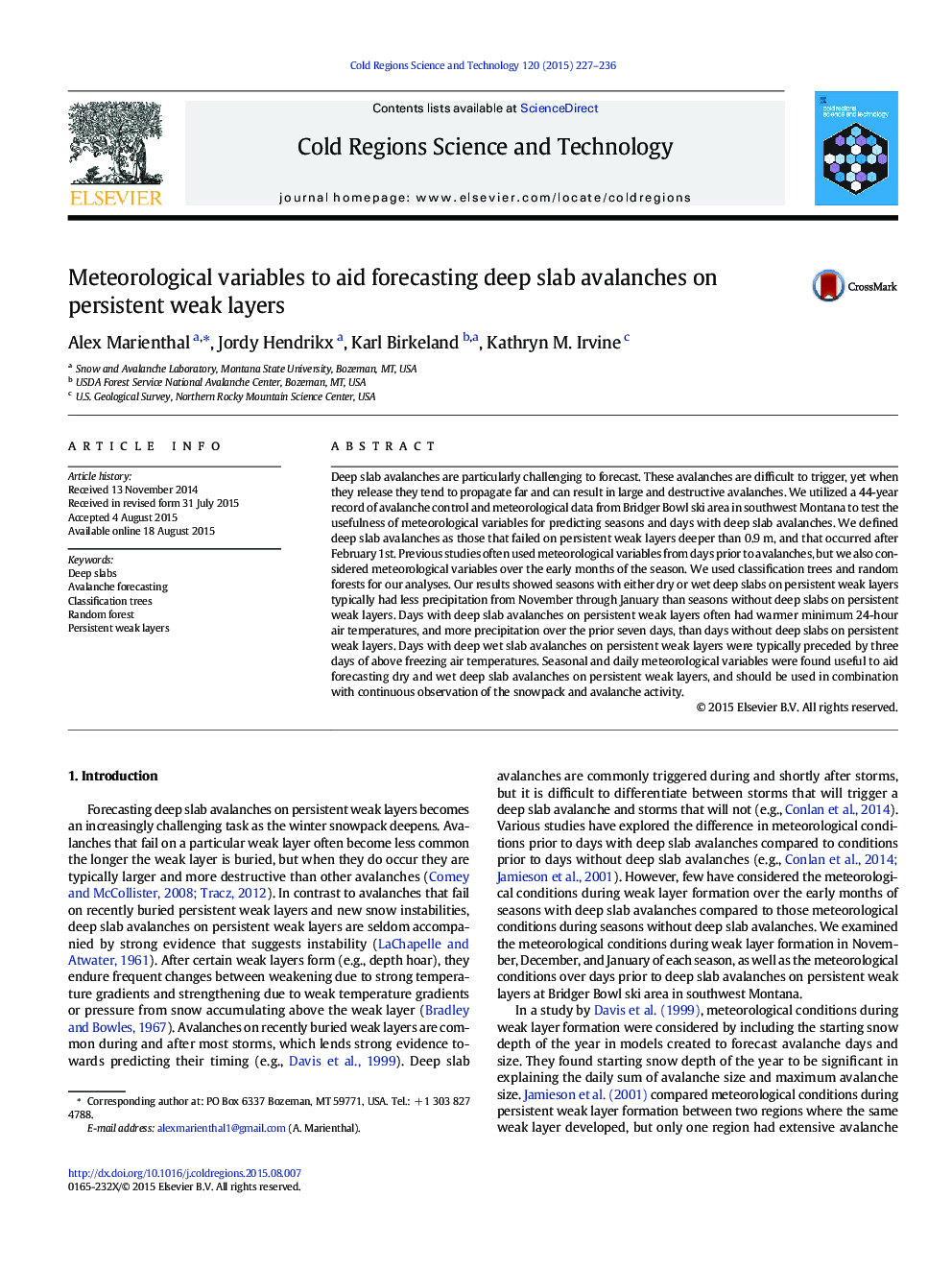| Article ID | Journal | Published Year | Pages | File Type |
|---|---|---|---|---|
| 6426736 | Cold Regions Science and Technology | 2015 | 10 Pages |
â¢Meteorological summaries were compared between seasons with and without deep slabs.â¢Summaries were also compared between days with and without deep slabs.â¢Seasons with deep slabs had drier early seasons than seasons without deep slabs.â¢Some seasons with deep slabs had greater maximum snow depth in November.â¢Days with deep wet slabs were preceded by sustained above freezing temperatures.
Deep slab avalanches are particularly challenging to forecast. These avalanches are difficult to trigger, yet when they release they tend to propagate far and can result in large and destructive avalanches. We utilized a 44-year record of avalanche control and meteorological data from Bridger Bowl ski area in southwest Montana to test the usefulness of meteorological variables for predicting seasons and days with deep slab avalanches. We defined deep slab avalanches as those that failed on persistent weak layers deeper than 0.9Â m, and that occurred after February 1st. Previous studies often used meteorological variables from days prior to avalanches, but we also considered meteorological variables over the early months of the season. We used classification trees and random forests for our analyses. Our results showed seasons with either dry or wet deep slabs on persistent weak layers typically had less precipitation from November through January than seasons without deep slabs on persistent weak layers. Days with deep slab avalanches on persistent weak layers often had warmer minimum 24-hour air temperatures, and more precipitation over the prior seven days, than days without deep slabs on persistent weak layers. Days with deep wet slab avalanches on persistent weak layers were typically preceded by three days of above freezing air temperatures. Seasonal and daily meteorological variables were found useful to aid forecasting dry and wet deep slab avalanches on persistent weak layers, and should be used in combination with continuous observation of the snowpack and avalanche activity.
